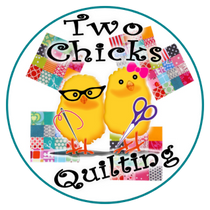We all have favorite fabrics, and sometimes we just can’t help but hold on to every single piece of them, no matter how small. No scraps left behind! But what do you do with such teeny pieces? You make a crumb quilt.
What is crumb quilting?
Crumb quilting is a technique that involves piecing together small fabric scraps to create a unique and textured fabric surface. Instead of using larger, pre-cut pieces of fabric, crumb quilting utilizes even the tiniest scraps that would typically be discarded. These scraps are layered then stitched together in a random manner, resulting in a collage-like effect where no two crumb quilts are exactly alike.
The improvisational process of crumb quilting allows you to make use of leftover fabric scraps from previous projects, minimizing waste and creating something beautiful out of what might otherwise be considered unusable. It’s a versatile technique that can be used to make items such as quilts, bags, pillow covers, and more.
There are as many methods of crumb quilting as there are scraps in your scrap basket! But we’ve put together a tutorial for the way that we love because it can be created on either a domestic machine or right on your longarm machine.
Follow along below with our crumb quilting tutorial to bust through your scrap bag.


Materials
- Scraps
- Batting
- Backing Fabric
- Sewing machine or Longarm
- Thread

The Crumb Quilting Process
- Lay Out Your Fabric: Begin by laying out your backing fabric and batting. Now comes the fun part! Start by arranging your fabric scraps randomly on top of the batting, and try to ensure that they cover most of the batting. Keep in mind, you’ll want to overlap the edges of the fabric scraps to ensure complete coverage.
- Fill in the Blanks: Once you’ve laid down your larger fabric scraps, start filling in the gaps with smaller pieces. Don’t worry about wrinkles or folds; these will be quilted down later.
- Plan Your Design: Consider where you want certain fabric pieces to be showcased, especially if you have special or unique scraps like selvages. For example, if you plan to make a zipper bag, position your favorite fabric pieces strategically. As you finesse your fabrics, make sure that all the batting in your crumb quilt sandwich is covered.
- Start Quilting: Begin quilting by stitching straight lines across the fabric pieces. You can use a channel lock or a ruler to ensure straight lines if desired, but feel free to make them freeform. Don’t overthink it! If your stitching isn’t perfectly straight or evenly spaced that adds character and texture. Stitch over the entire surface, securing the fabric scraps to the batting.
- Add More Stitches: Once you’ve quilted horizontally, go back and quilt vertically. The heavy quilting ensures that all the fabric pieces are securely attached and creates a beautiful texture.
- Adjust as Needed: If you notice any gaps or areas where the batting is showing through, fill them in with additional fabric scraps and quilt over them.
- Finish and Trim: Once you’re satisfied with the quilting, trim the quilt to the desired size, matching the dimensions of your project or subcut into smaller pieces.
- Optional Embellishments: Get creative with embellishments if desired. Consider adding decorative stitches or additional fabric layers to enhance the texture and visual appeal of your crumb quilt.
- Complete Your Project: Use your crumb quilt as the foundation for various projects, such as zipper bags, mug rugs, or even as a unique fabric for clothing.

If a tutorial video is more your speed, follow along with our Crumb Quilting Tutorial video on our YouTube channel. Two Chicks Quilting is always here to help you figure out what to do with all your favorite fabrics, and of course to help you find your new favorites!


